In the face of rising emission regulations and a marked shift towards electrification, V10 engines are on the brink of extinction. Most sports cars have migrated to smaller turbocharged engines but no automaker has championed a decade of cylinders more than the Volkswagen Audi Group. In many ways, the V10 is the reason for the success of Audi’s halo sports car, the R8. Just a glimpse of the spec sheet reveals it all.

The R8’s mid-mounted 5.2-litre naturally aspirated V10 delivers an eye-watering 602 hp and 416 lb-ft of torque through a 7-speed dual-clutch automatic, quattro all-wheel drive, and will scream up to a heavenly 8,700 rpm. A rear-wheel drive R8 is also available as a base model if you can even call it that, with 562 hp on tap and a lower price tag.

No matter the engine spec, acceleration is rampant, dizzying, and downright violent when the V10 is fully lit. The quattro convertible we had on test will sprint from 0-100 km/h in 3.4 seconds, just one-tenth slower than the coupe. And it corners brilliantly too. Natural steering, superb brakes, and exceptional stability mean you can lean on the car and trust its instincts and movements. Directional changes and minor adjustments are met with zero resistance, and the R8 willingly turns directions with eagerness but it also defaults into that classic Audi understeer when pushed too hard.
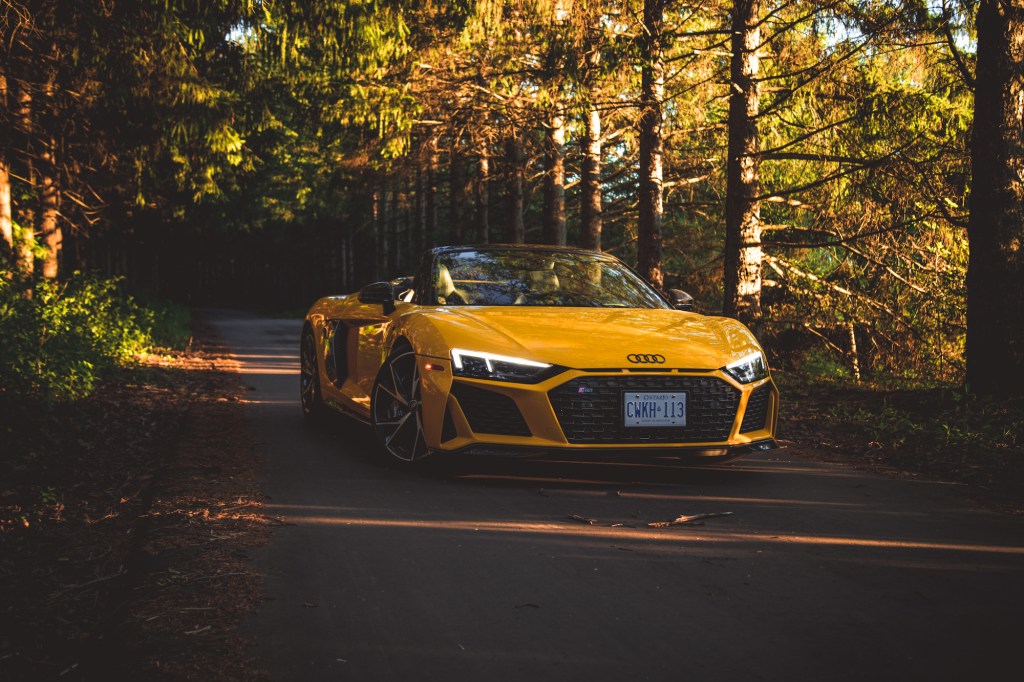
The quattro system offers a silly amount of lateral grip, as do the sticky Michelin Pilot Sport 4 S tires and chunky 305-section rears. But this abundance of mechanical grip, coupled with a conservative traction and stability control system means it will inevitably play on the safe side of the playground. Turning all the aids off reveals a more alert R8 that finally comes alive under your fingertips, but the default setup is clearly geared towards beginners or first-time supercar owners who might not need to extract the maximum potential of the R8 to have a blessed time. That said, the safety net the R8 provides is exceptionally wide, ensuring heroic antics don’t quickly transition into antagonistic ones. We mention this because there’s so much potential underneath that Teutonic epidermis. We know that because we’ve driven the Lamborghini Huracán.
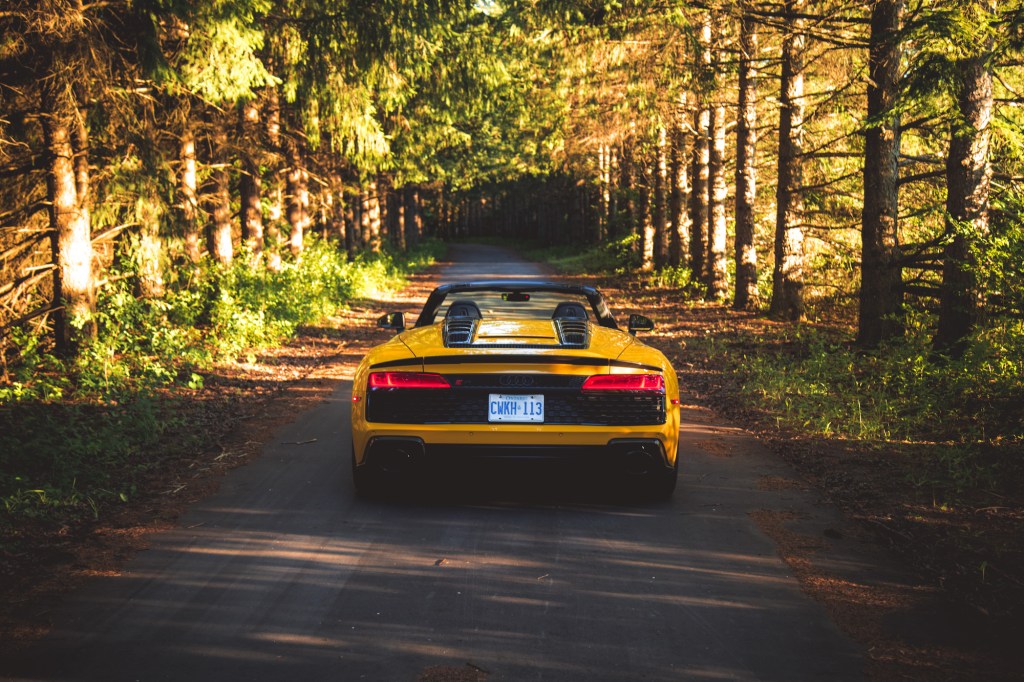
Despite the R8 and Huracán sharing so many parts, it’s actually mind-blowing how different they feel on the road. Whereas the Lamborghini is always egging you on to drive faster, the Audi holds you back. The R8 isn’t as engaging as its Italian counterpart, nor is it as flamboyantly styled. When it comes down to drama and theatre, the R8 lags behind by a few points, lacking that raw and cynical mentality of carving up a canyon road. A Lamborghini triple shot espresso versus an Audi cold brew. Same beans. Different execution.

What the spec sheet doesn’t tell you is that the R8 is also an affable and approachable companion. They don’t refer to it as a daily supercar for no good reason. The R8 rides surprisingly soft, and the damping is clearly tuned for road comfort rather than for performance that’s only exploitable on a track like in a Porsche 911 GT3 or Mercedes-AMG GT R. It doesn’t crash or oscillate with every minuscule road imperfection you cross, and it’s as gentle as an Audi RS 5. After a few hours of driving, you get out of the R8 grinning but refreshed. The seats are supportive in all the right areas, and wind buffeting in the Spyder is impressive even with the roof down, ensuring we had no issues conversing with our passengers at highway speeds. You could even call it a grand tourer.
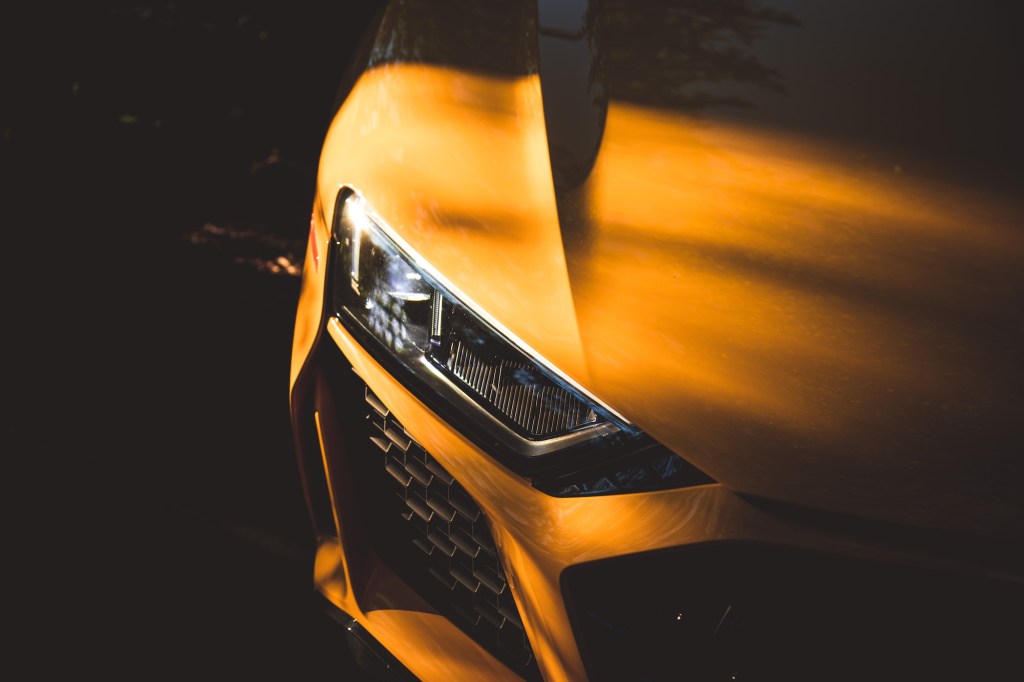
The only rough edge comes down to the dual-clutch gearbox, which doesn’t transition into lower gears as cleanly or as gently as a Porsche PDK, and will snap your neck forward during aggressive downshifts. On some occasions, the R8 will lurch during low-speed creeps or when setting off slowly in first gear. The standard carbon ceramic brakes also exhibit a grabbiness when cold, making it difficult to modulate the pedal to a smooth stop in traffic, until they’re properly warmed up. We think we know of a few ways to speed up that process.
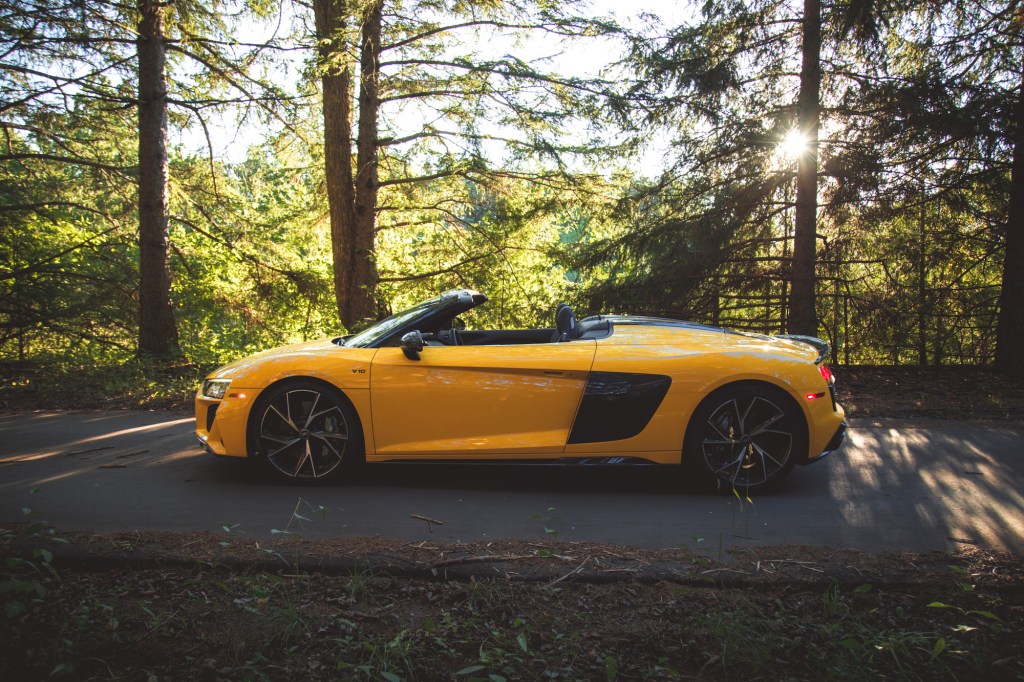
In our opinion, the R8 was meant to be topless. The Spyder adds that extra sense of occasion, as does the neck-breaking coat of Vegas Yellow paint. Not everyone will appreciate the overdose of Vitamin D but when the R8 stimulates your senses the way it does, it would be a shame not to, and the subsequent dopamine rush becomes addictive – V10 pinging right behind your ears at 8,700 rpm, the smell of summer grass in the air, crisp gales of wind crashing through your hair, and if you must complete the sensory checklist, the taste of the quilted leather.
The fabric roof takes twenty seconds to operate and can be done up to 50 km/h so you won’t have to pull over when the rain starts trickling like in a Corvette Stingray or 911 Speedster. It’s remarkably stiff and free of vibrations and the scuttle shake normally associated with convertibles as well, but the real reason you choose the Spyder is to gain front row access to the orchestral V10 soundtrack.

If you were to boil down the R8 experience into one star feature, it would be this. The V10 auditory signature is unique – not as baleful as a V12 but richer and more exotic in tone than a V8. The R8 fires up with an energetic howl, followed by a bark and crackle as the engine exhales through open exhaust valves. It doesn’t reach the 9,000 rpm ceiling like a 911 GT3 or Ferrari 812 Superfast but it’s damn close. However, what bothered us what the fact that the valves only open once you hit 4,000 rpm. Below that, the noise is heavily suppressed. You also don’t hear the throttle bodies open and close with every prod of the gas pedal like you do in the Huracán. We also loathe the soft limiter, meaning you can’t rev the V10 up when parked or idling in neutral – Audi decided to stuff a tennis ball into the tuba. The Huracán doesn’t have a limiter so we don’t see why the R8 should. On the bright side, you can mute the exhaust with the push of a button, allowing you to cruise past neighbourhoods without provoking an army of raised pitchforks. Nothing to be done about the obnoxiously loud ignition bark, though.

Where the R8 undeniably triumphs over the Huracán is with functionality. Audi’s practical supercar houses a thick layer of everyday comfort with a sizable front trunk and better interior packaging. It’s not as roomy as a McLaren GT or a Porsche 911 with its token rear seats, but there are plenty of storage cubbies in the R8, including a stacked one behind the seats, two cupholders under the armrest, door slots, and a large bin above the gear shifter that also hides the wireless charging pad. The Spyder, however, is compromised. Like the Mercedes-AMG GT Convertible, Audi had to shrink the cabin length to make room for roof stowage behind the seats. So even though the footwell is wide, there is limited seat recline. For my slender six-foot frame, that meant I had to choose between sitting too upright or sitting too far forward. There was no cozy in-between so naturally, I chose the latter, until my feet began to cramp.

The rest of the interior is nicely appointed though some might find it spartan compared to the glitzy interiors from Mercedes that are dominated by digital real estate. The R8 instead prefers a simplistic and clean dashboard free from distractions, and a high-definition, lag-free Virtual Cockpit display to deal with the infotainment features. The leather is sufficiently padded and quilted though not as plush as those you would find in a Range Rover or BMW. The paddle shifters also feel cheap and are no better than the ones in a standard A3, especially when you’ve played with examples in an AMG or Maserati that emit satisfying metallic clinks and turn the act of shifting into a privilege.

The Audi R8 wins us over with a riveting performance and an exhaust soundtrack that we want to play on repeat. The V10 is a seductive engine that encapsulates the magic of a sports car and spews it out in a flame of Vegas Yellow. The Spyder is the way to go unless your body frame doesn’t suit the snug interior. Even then, it’s almost worth the muscle cramps for the auditory bliss alone, and the R8’s thick layer of daily usability and comfort is a virtue in its own right. It’s a crown achievement of a dinosaur on its way out, a spectacle of its age, and a pioneer of performance and driving theatre.
Specifications:
Model: 2022 Audi R8 V10 performance quattro Spyder
Paint Type: Vegas Yellow
Base Price: $245,150
Price as Tested: $246,900
Wheelbase(mm): 2,650
Length/Width/Height (mm): 4,430 / 1,940 / 1,242
Curb weight (kg): 1,775
Engine: 5.2-litre V10
Horsepower: 602 hp @ 8,100 rpm
Torque: 413 lb-ft @ 6,600 rpm
Transmission: 7-speed dual-clutch automatic
Engine & Drive Configuration: Mid engine, AWD
Fuel Consumption ( City / Highway / Combined ) L/100km:17.7 / 12.8 / 15.5
Observed Fuel Consumption (L/100km): 19.7
Tires: Michelin Pilot Sport 4 S; P245/30R20 front; P305/30R20 rear

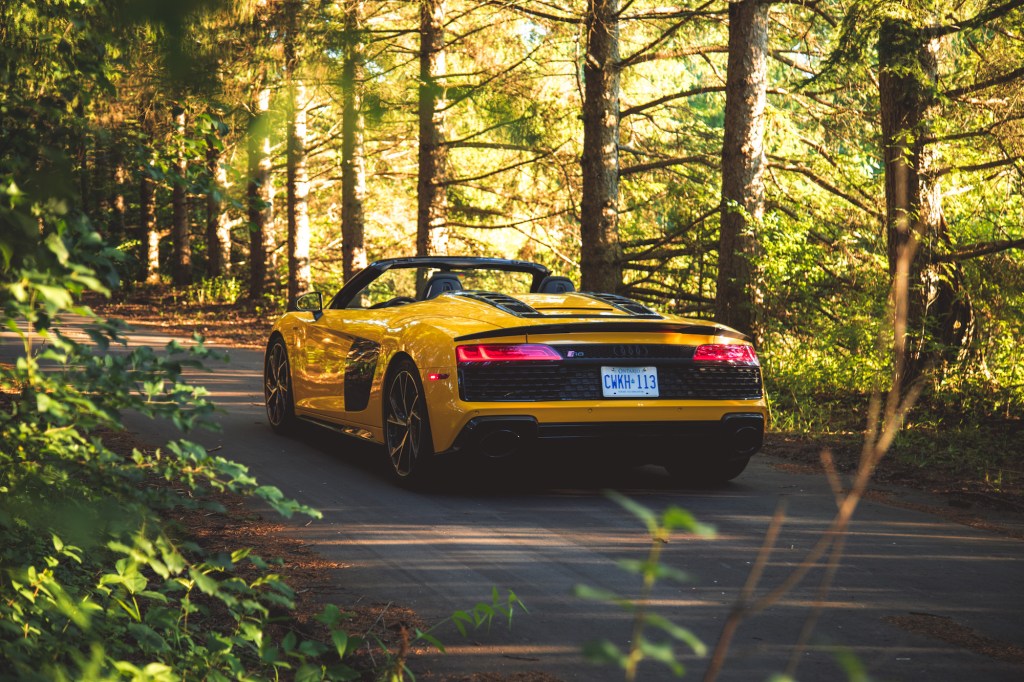
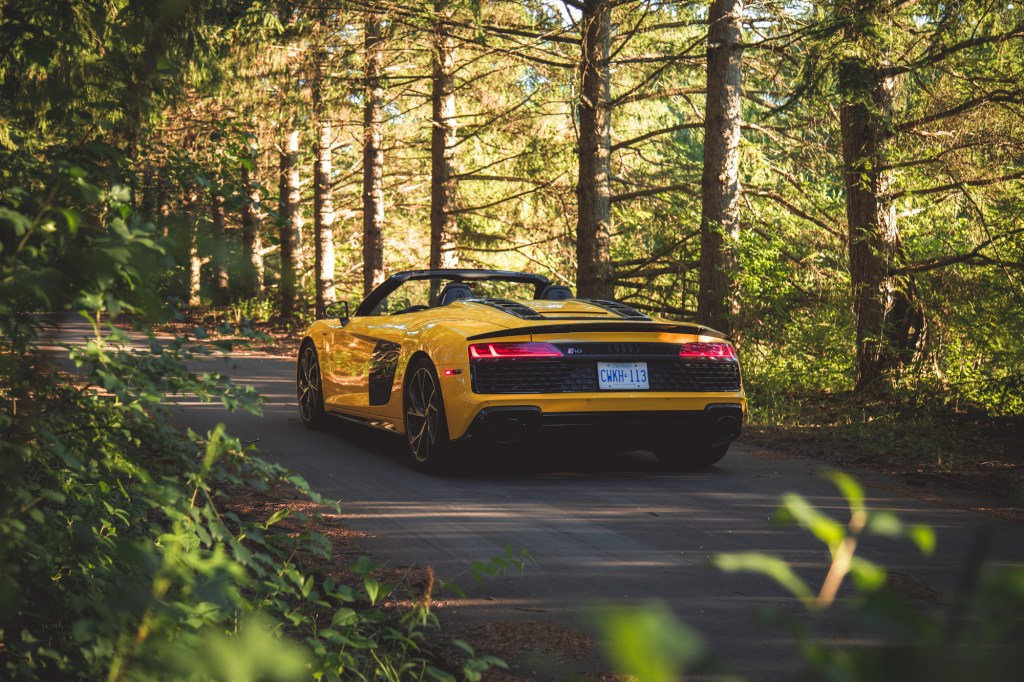


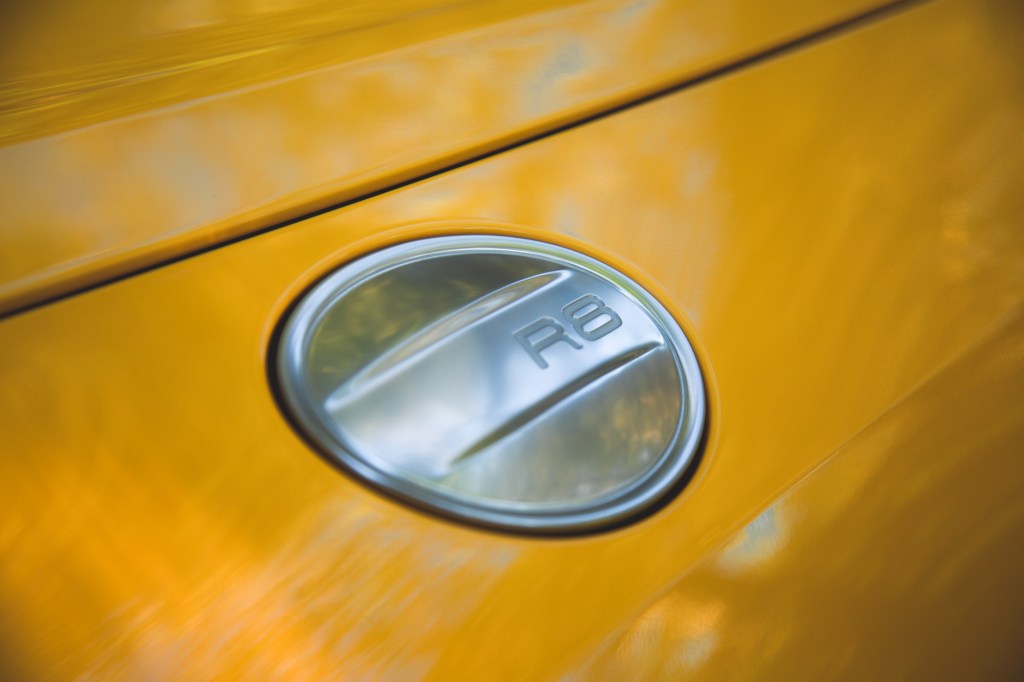

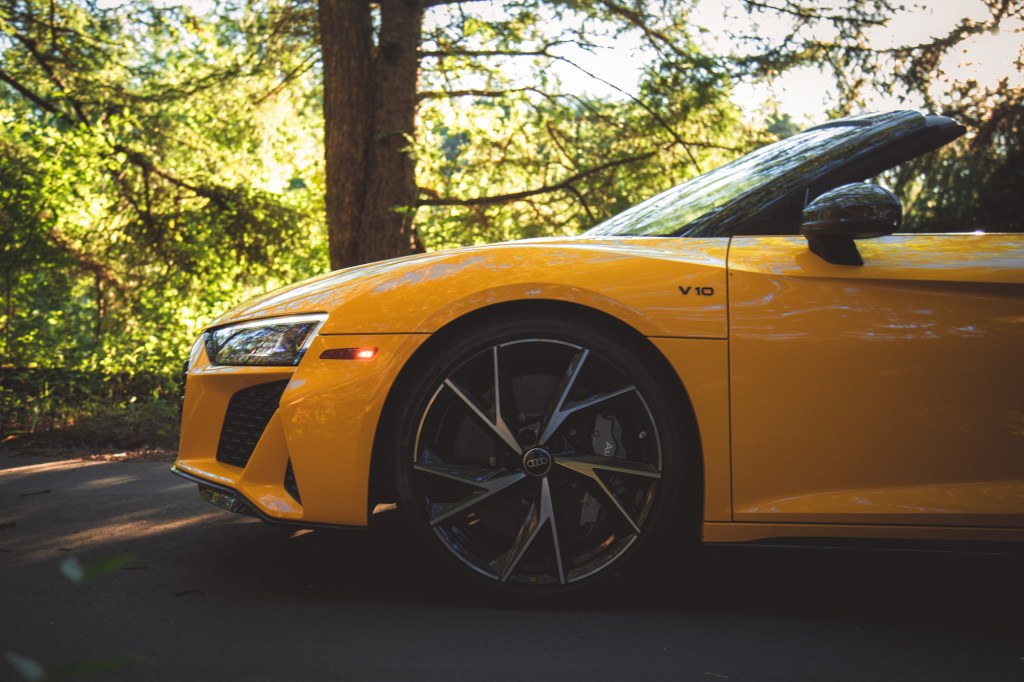






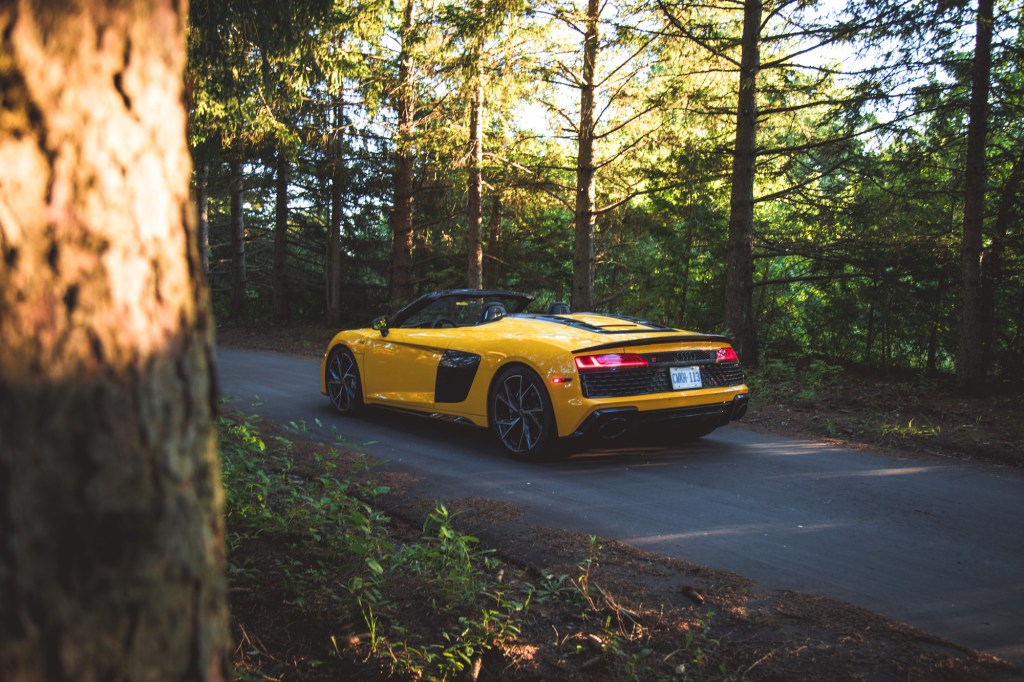




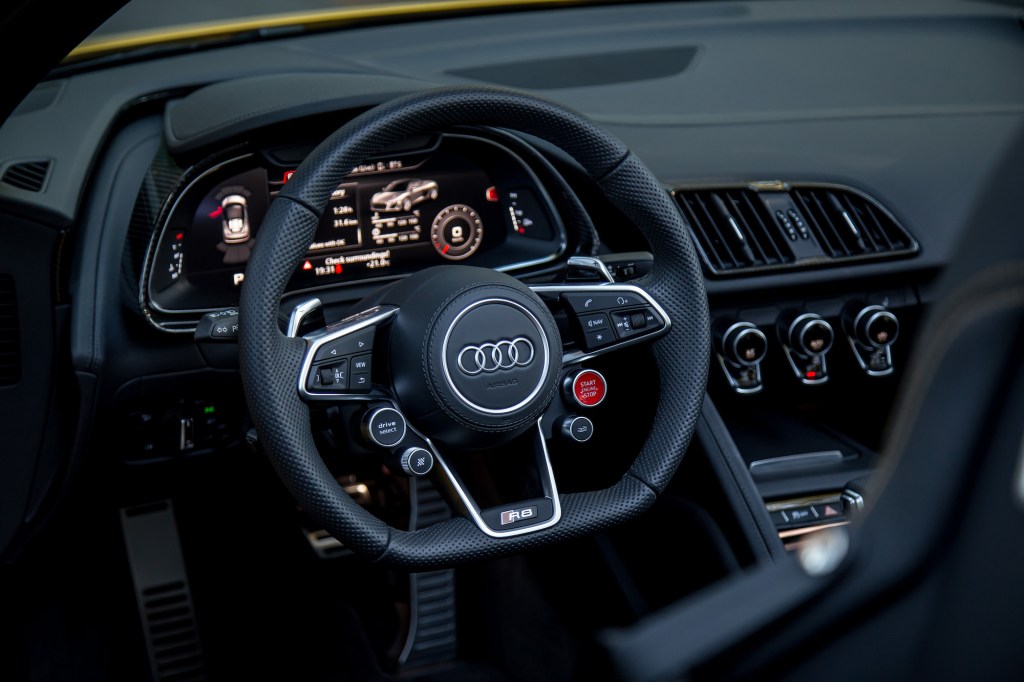
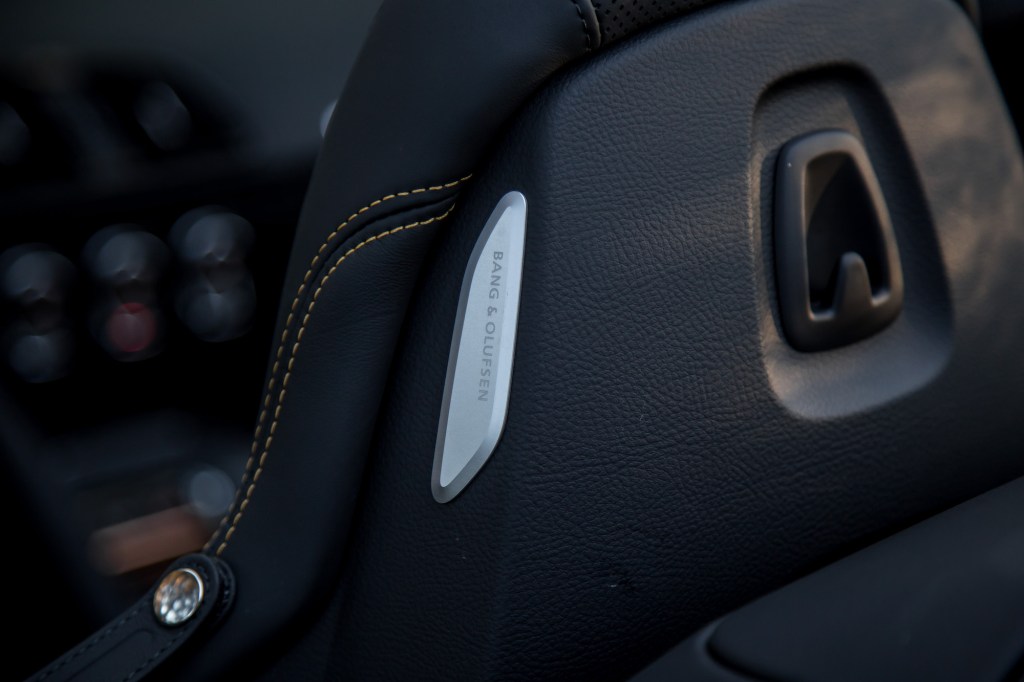








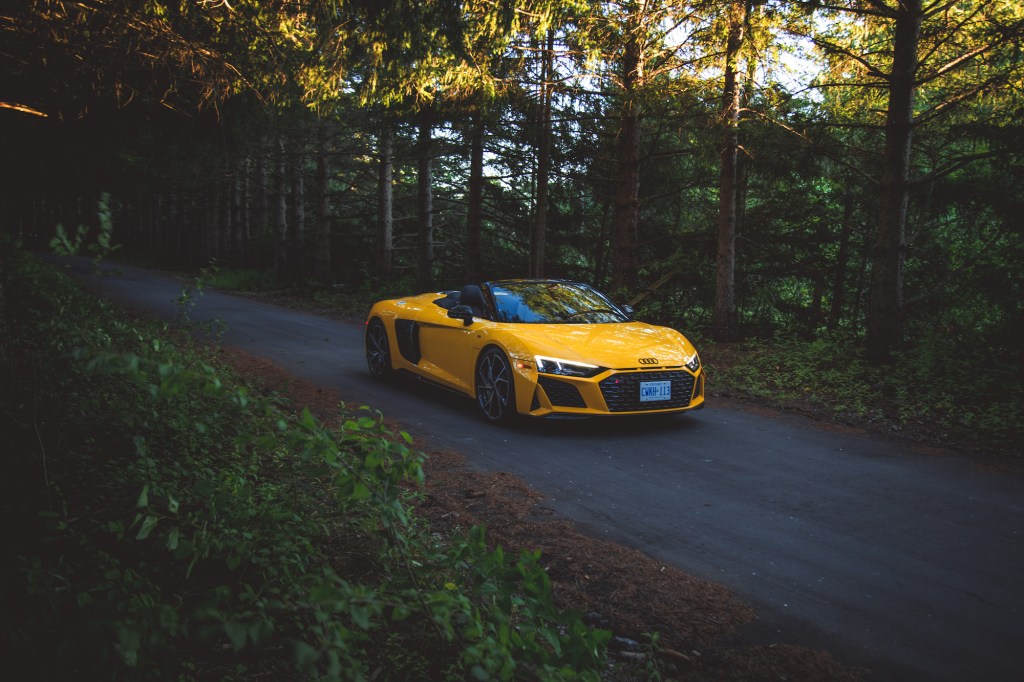
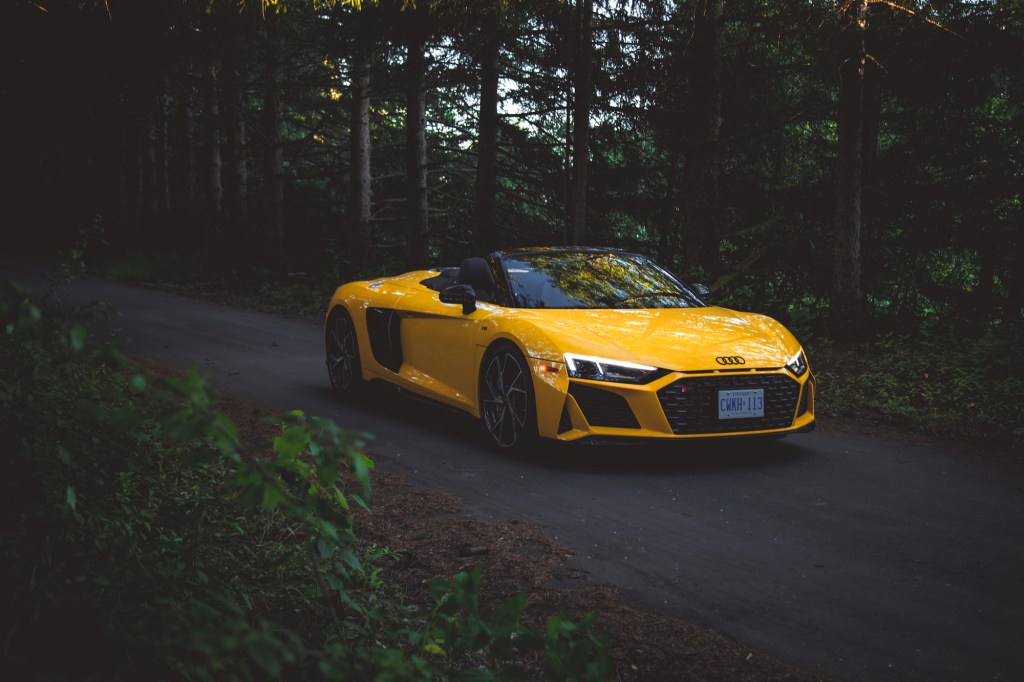









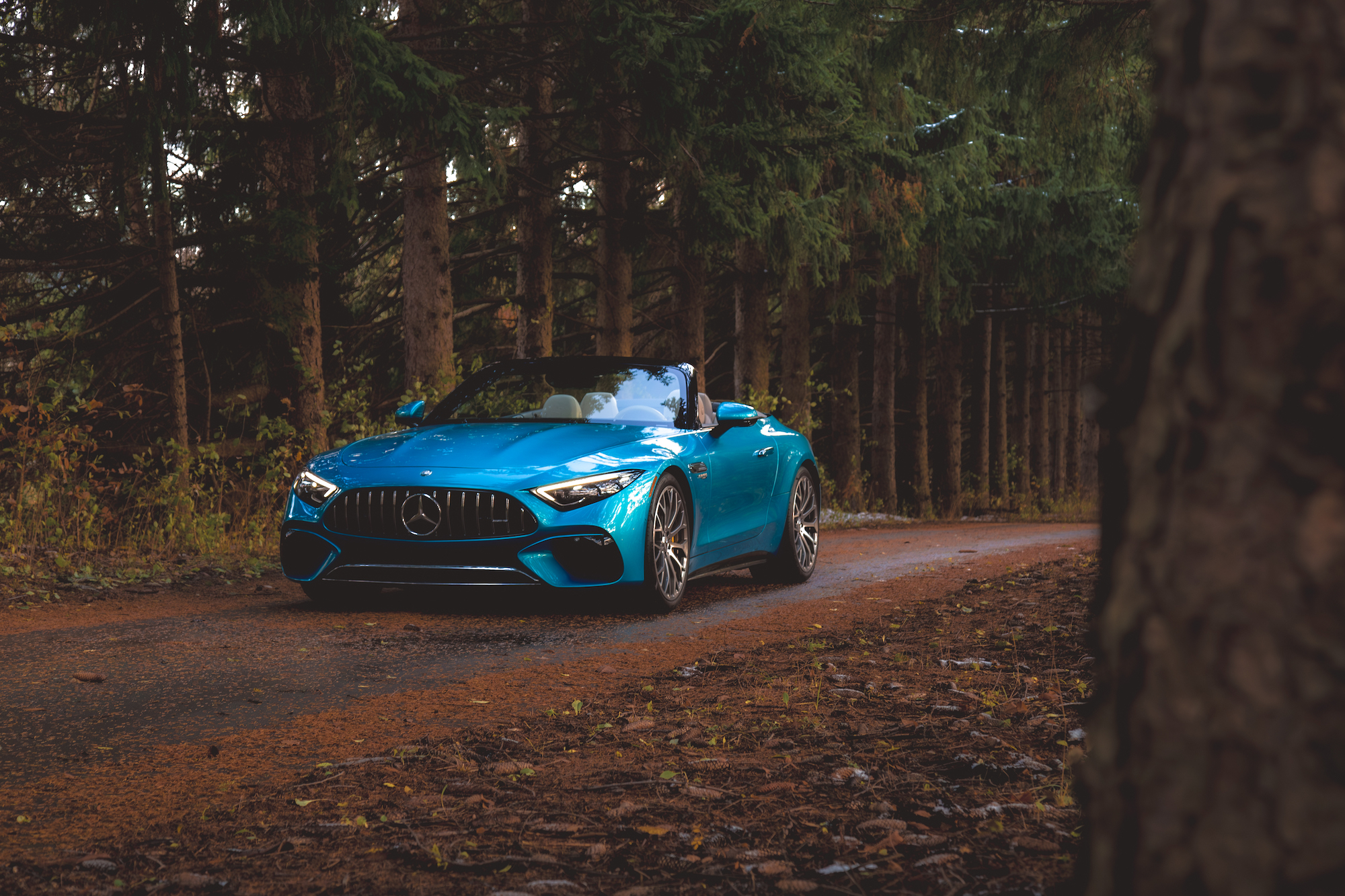

Leave a Reply